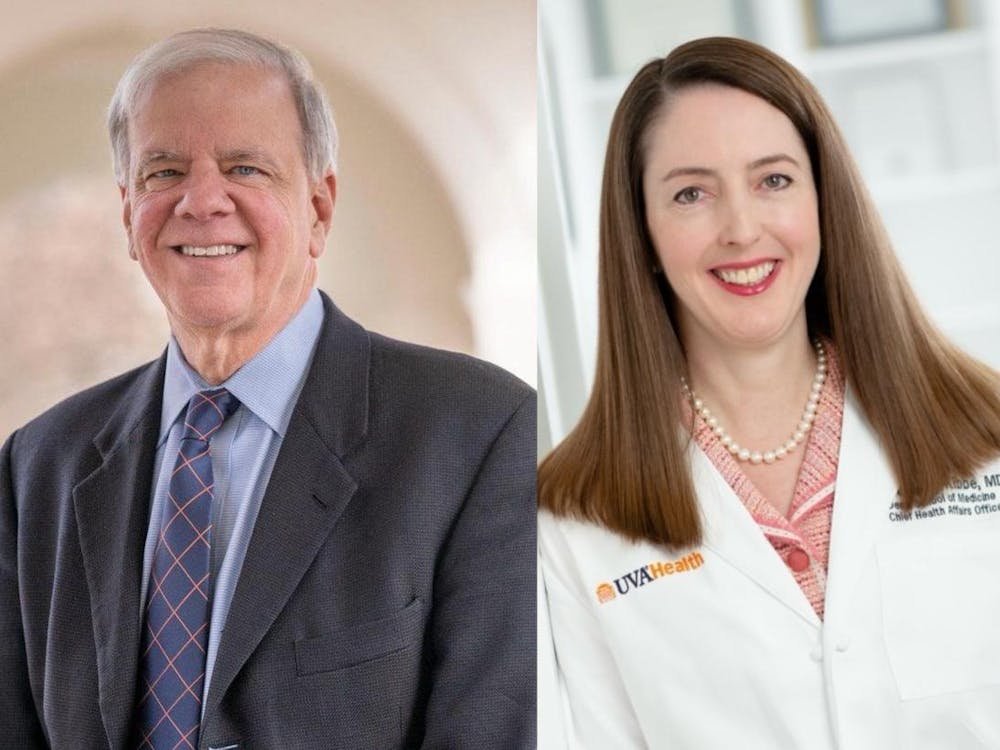The reveal of the iPhone X’s Face ID at the Apple Special Event Sept. 12 has led technology analysts to speculate about what this release could mean for the future of the field.
According to Apple’s website, the iPhone X’s TrueDepth infrared camera reads the 3D facial map created by 30,000 dots projected onto the face. Invisible infrared lights are used to illuminate the face in inadequate lighting. The facial mapping is not stored on the cloud — all information from the instantaneous authentication is encrypted and secured by the Secure Enclave, the same place that stores Touch ID information on older devices.
Apple promotes that increased security is a major benefit of facial recognition technology in the iPhone X. However, all biometrics have tradeoffs, Computer Science Prof. John Stankovic said. Stankovic compares the potential difficulties of getting the device to register a face to mistyping a password before carefully trying again.
Apple advertises that its A11 Bionic chip’s machine learning is able to recognize changes in appearance. Machine learning allows a computer system to continually improve on itself without being explicitly programmed. Computer Science Asst. Prof. Vicente Ordóñez said he is concerned about the testing of this technology.
“We need to develop better ways to test the systems before deployment because a lot of the systems are based on machine learning,” Ordóñez said. “It’s hard to track what the system is really doing in its internals, so we have to develop better testing tools for these types of systems and hopefully testing tools that allow us to check for all possible things that could go well or could go wrong with the systems.”
Applications of facial recognition span marketing, security, and potentially the classroom. Jason Brewster, Incubator Program Director for the i.Lab at UVA, said that facial expressions could be used to optimize results while online shopping. Brewster said this use of personal information is akin to Google’s extensive scrubbing of Gmail data to tailor ads displayed. Brewster calls this a “barter system” — you give up some level of privacy for an optimized experience, and they can use this data for whatever they want.
Additionally, Brewster sees potential for the use of facial recognition in the classroom. Facial recognition could be used to improve classroom methods by providing the professor with useful information in real time — who’s understanding the material and who’s zoning out, Brewster said.
Despite these possibilities, Brewster said it is unlikely that innovations like these will soon be seen at the University.
“Universities don't tend to be on the cutting edge of this kind of stuff,” Brewster said.
Instead, Brewster said he sees greater potential for the use of facial recognition technology by large companies, such as Amazon, with greater depth of financial resources.
Rick Reifenstein, Director of Technology and Innovation for the Office of the Dean of Students, does not see this technology in the University’s immediate future. However, Reifenstein said he remains open to the change if there is a push by the students.
“At the University, we see this with students all the time when they have certain expectations,” Reifenstein said. “It could be the University is put in this situation where we're like, ‘well hey, the students come here and they're expecting it, so let's incorporate that.’”
Despite financial and logistical limitations on implementing facial recognition, ODOS is hoping to bring more technologies to the University.
Reifenstein said ODOS is working to expand the collection and analysis of the data on the attendance of student events. Additionally, ODOS is looking to improve “behind the scenes” technology — referring to the management of ODOS responsibilities using technology.
“We are always looking at better technology, better ways of managing our spaces,” Reifenstein said. “Reserving student activities space and analyzing that data and looking where there are opportunities to provide better service.”
ODOS is also continually looking to bring more audiovisual technology to the University and “even fun stuff,” like gaming equipment, Reifenstein said.
When speaking of predictions for the future implications of this technology, Reifenstein refers to an “Apple reality distortion” — where the excitement of the release of new technology can cloud the perception of its significance.
“You get caught up in the whole announcement,” Reifenstein said. “Then, of course, afterwards you start thinking about the implications. Is it really all that amazing?”
Brewster and Stankovic both said that widespread use of facial recognition could mean a loss of privacy. Furthermore, Brewster said that, because facial expressions reveal true feeling, your phone will now always know the truth behind your facial expressions and such will be the case wherever facial recognition technology is deployed.
When it comes to the future, however, Stankovic and Brewster are hopeful for innovations using this technology. Stankovic said he sees many potential applications for mobile and wireless health, specifically in the use of virtual assistants in rural areas. Brewster said he hopes to see i.Lab applications from founders working on facial and related technologies in the coming years.
“Charlottesville is rapidly growing its base of these types of businesses,” Brewster said. “We are ready, exciting [sic] and willing to support U.Va students and the broader Charlottesville community with nascent interest in cutting edge fields.”





